Importance of House Painting
House painting plays a key role in maintaining and enhancing the beauty of any home. A fresh coat of paint can instantly improve the appearance of a property, making it look well-kept and inviting. Beyond aesthetics, painting also helps protect surfaces from the elements, such as rain, sunlight, and dust. This protection is especially important for exterior walls, which are exposed to harsh weather conditions. Regular painting can prevent issues like peeling, cracking, and mold growth, which can lead to costly repairs.
Purpose of the Post
The purpose of this post is to provide helpful insights for those interested in house painting. Whether you're a homeowner looking to refresh your living space or someone curious about painting techniques, this guide will cover essential topics. We'll explore the different types of paints and how to choose the right one, the necessary tools for the job, and the best techniques for applying paint smoothly. By the end of this post, you'll have a clearer understanding of how to achieve professional-looking results in your painting projects.
House painting may seem simple, but it requires proper preparation, the right tools, and good techniques to ensure a lasting and visually pleasing finish. We'll also discuss common challenges in house painting and when it’s best to call in a professional painter. Whether you decide to tackle a project yourself or hire someone, this guide will help you make informed decisions and improve the outcome of your next painting project.
Benefits of House Painting
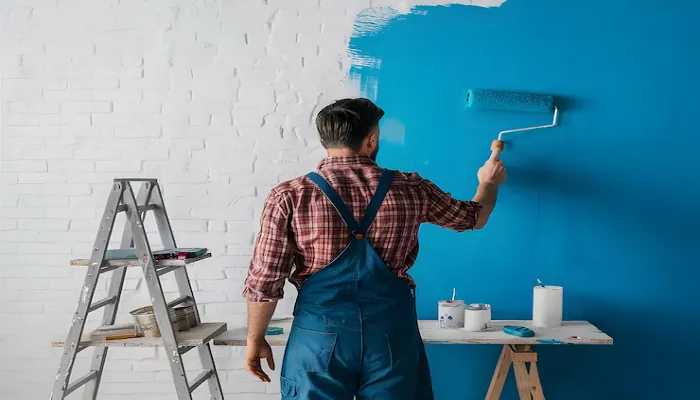
Enhancing Curb Appeal and Home Aesthetics
One of the main benefits of house painting is the immediate improvement in a home’s appearance. A fresh, well-chosen paint color can transform the look of your house, making it more inviting and appealing. Whether you are preparing to sell your home or simply want to refresh its look, painting can significantly boost curb appeal. The right combination of exterior and interior colors can make a home look modern, clean, and well-maintained, making it more attractive to potential buyers and guests.
Protecting Surfaces from Weather, Wear, and Damage
Beyond appearance, house painting serves an important protective function. Exterior walls are constantly exposed to harsh weather conditions such as rain, wind, snow, and sunlight. Over time, these elements can damage surfaces, causing cracks, fading, or even water damage. A good coat of paint acts as a barrier, shielding surfaces from these damaging effects. Regular painting prevents issues like mold, mildew, and wood rot, which can lead to expensive repairs. Inside the house, paint also helps protect walls from stains, dirt, and general wear and tear.
Increasing Property Value
Another important benefit of house painting is its ability to increase the value of your property. When selling a home, first impressions are crucial, and a freshly painted house makes a strong positive impact on potential buyers. A well-maintained exterior signals that the property has been cared for, which can boost its market value. Similarly, a clean and updated interior makes a home feel more welcoming and move-in ready. Whether you're selling or simply maintaining your home, investing in regular painting can increase your property’s worth in the long run.
Choosing the Right Paint
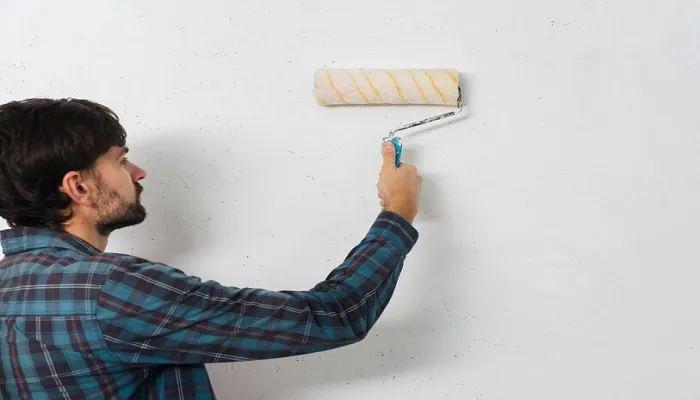
Types of Paint: Oil-Based vs. Water-Based
When selecting paint for your home, it's important to understand the differences between oil-based and water-based paints. Oil-based paints are known for their durability and are typically used for high-traffic areas or surfaces that need extra protection, such as doors and trim. They provide a smooth, glossy finish but take longer to dry and can have a strong odor. Water-based paints, on the other hand, are more commonly used for interior walls. They dry faster, have fewer fumes, and are easier to clean up with just soap and water. Modern water-based paints have improved durability and are a popular choice for most painting projects.
Selecting the Right Paint for Different Surfaces
Different surfaces require different types of paint. For interior walls, water-based paints are often the best choice because they are easy to apply, quick to dry, and come in a variety of finishes. For trim and doors, oil-based or enamel paints offer better protection against scuffs and wear. When it comes to exterior surfaces, it's important to use paint specifically designed to withstand the elements. Exterior paints are formulated to resist fading, cracking, and moisture damage, making them essential for protecting your home’s exterior.
Color Selection Tips for Various Rooms
Choosing the right color for each room can transform the feel of your home. For living rooms and bedrooms, neutral shades like beige, gray, or soft pastels create a calming, relaxing atmosphere. In kitchens and bathrooms, brighter colors like yellow, blue, or green can add energy and vibrancy. It’s also important to consider the room’s lighting. Natural light can make colors appear brighter, while artificial lighting can affect how the paint looks. Test your color choices on a small area before committing to ensure it complements the room's design.
Essential Tools for House Painting
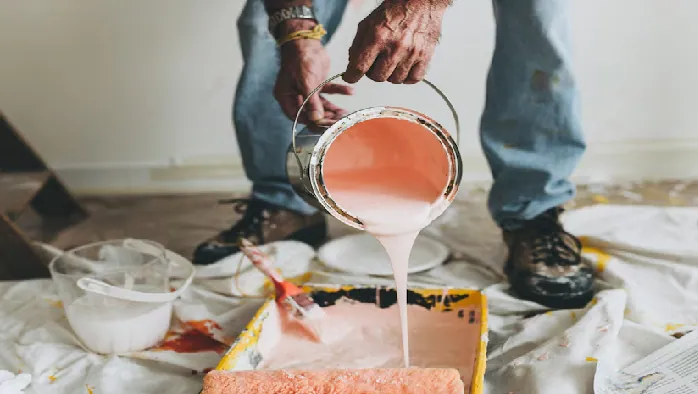
Common Tools Needed for Painting
When starting a house painting project, having the right tools is key to achieving good results. Some of the most common tools include brushes, rollers, sprayers, and ladders. Brushes come in various sizes and are essential for detailed work like painting edges, corners, and trim. Rollers are best for covering large flat surfaces, such as walls and ceilings, quickly and smoothly. Paint sprayers can be helpful for painting large areas, especially exterior walls, as they apply an even coat of paint in less time. Ladders are also important to safely reach high places, like ceilings or the upper parts of walls.
Importance of Using High-Quality Tools
Investing in high-quality tools can make a big difference in the final result of your painting job. A good brush will give you better control and leave fewer streaks or brush marks. High-quality rollers hold more paint and spread it evenly, which means fewer coats and less effort. Cheap rollers and brushes tend to shed bristles or foam, which can stick to the wall and ruin your paint job. Paint sprayers also vary in quality—higher-end models are less likely to clog and will produce a finer mist, leading to a more professional finish.
Other Essential Tools and Accessories
In addition to brushes and rollers, you’ll need other tools like painter’s tape, drop cloths, and paint trays. Painter’s tape helps you achieve clean, sharp lines by masking off areas like trim and windows. Drop cloths protect your floors and furniture from paint drips, and paint trays are useful for holding paint when using rollers. By using these tools correctly, you can make your painting job easier, faster, and more efficient, while ensuring a polished, professional look.
Preparation for Painting
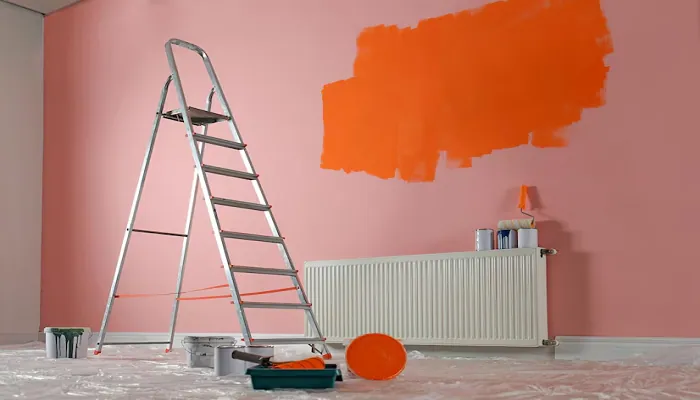
Surface Preparation: Cleaning, Sanding, and Priming
Before starting any painting project, proper surface preparation is crucial for achieving a smooth, long-lasting finish. The first step is to clean the surfaces you plan to paint. Dust, dirt, and grease can prevent the paint from adhering properly. Use a damp cloth or a mild detergent to clean walls, especially in kitchens and bathrooms where grime tends to build up.
Sanding is the next important step. Lightly sanding the surface helps create a texture that allows the paint to stick better. Sanding also smooths out any rough patches or old paint drips. After sanding, wipe the surface again to remove dust.
Priming is essential, especially if you are painting over dark colors, bare wood, or surfaces that have stains. A good primer creates a base that helps the paint stick, enhances the color, and makes it last longer.
Importance of Taping and Protecting Surrounding Areas
Taping off areas that shouldn’t be painted is a simple but important task. Use painter’s tape to protect trim, windows, doorframes, and outlets. This ensures clean, crisp lines and prevents paint from spreading to areas where it’s not wanted. It’s also a good idea to cover furniture, floors, and countertops with drop cloths or plastic sheeting to avoid accidental splatters.
How to Repair Cracks, Holes, and Imperfections
Before you start painting, take time to fix any cracks, holes, or other imperfections on the surface. Small cracks or nail holes can be filled with spackling paste or putty. Use a putty knife to apply the paste, then sand it smooth after it dries. For larger holes or damaged drywall, you may need to patch the area with a drywall repair kit. Properly repairing these imperfections ensures the paint will look smooth and flawless once applied.
Painting Techniques
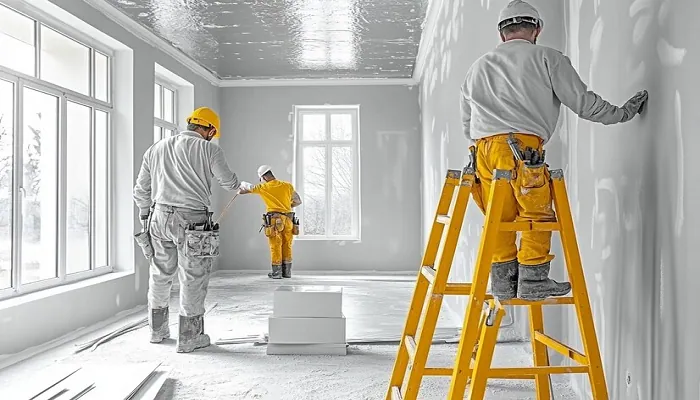
Brush and Roller Methods for Smooth Application
When it comes to painting, using the right technique is just as important as choosing the right paint. Brushes and rollers are the most common tools for applying paint. For smaller, detailed areas like trim, a good-quality brush is best. Brushes allow for precise control and are perfect for tight corners or edges.
For larger areas like walls and ceilings, rollers are more efficient. Rollers cover wide spaces quickly and evenly, giving a smooth finish. Make sure to choose the right roller for your surface; thicker rollers are better for textured walls, while thinner ones work well on smooth surfaces.
Best Practices for Cutting In and Applying Coats Evenly
"Cutting in" refers to painting the edges of a room where the wall meets the ceiling, trim, or corners. Use a brush to carefully outline these areas before using a roller on the larger surfaces. This ensures clean edges and prevents overlap.
When applying paint, it’s important to use long, smooth strokes with a brush or roller. For even coverage, apply the paint in an "M" or "W" pattern, and then fill in the gaps. Avoid overloading your brush or roller with paint, as this can cause drips and uneven layers. Two coats are typically recommended for a durable and even finish, with drying time in between.
Tips for Painting Ceilings, Walls, and Trim
Start by painting the ceiling first to avoid splatters on freshly painted walls. Use a roller with an extension pole to make it easier to reach high areas. Once the ceiling is dry, move on to the walls, cutting in the edges first and then rolling the paint onto the larger sections.
For trim, use a small brush and paint in long, steady strokes to avoid visible brush marks. It’s best to paint the trim last, as this ensures a neat and clean look without accidentally smudging other areas.
Common Challenges in House Painting

Handling Paint Drips, Streaks, and Uneven Coverage
One of the most frustrating challenges in house painting is dealing with paint drips and streaks. These often occur when too much paint is applied at once, or when the brush or roller is overloaded. To avoid drips, always use a moderate amount of paint and apply it evenly. If a drip does form, wipe it away immediately with a damp cloth or brush before it dries. For streaks, ensure you use smooth, long strokes and maintain even pressure while painting.
Uneven coverage can also be a problem, especially when working with lighter paints over dark surfaces. The key to overcoming this is to apply multiple thin coats rather than one thick layer. Let each coat dry fully before adding the next, and make sure to cover all areas, including edges and corners, to avoid patchiness.
Dealing with Difficult Areas Like Corners, High Walls, and Textured Surfaces
Painting corners, high walls, and textured surfaces presents unique challenges. For corners, it’s important to use a smaller angled brush to ensure you reach all the nooks and crannies. Carefully “cut in” the corners by painting along the edges first before filling in the rest of the wall.
High walls can be tricky because of their height, but using an extension pole for your roller will make the job easier and safer. If the walls are especially tall, consider using a ladder or scaffolding for better access.
Textured surfaces, like stucco or rough wood, require more effort. Use a thicker roller or a special textured roller designed for such surfaces. You may also need to apply more coats to ensure even coverage, as paint tends to settle unevenly on rough areas.
In summary, careful planning, using the right tools, and employing proper techniques can help overcome these common painting challenges for a smooth, professional-looking finish.
When to Hire a Professional

When a DIY Project May Be Too Large or Complex
Not all house painting projects are suitable for DIY enthusiasts. If the job is particularly large, such as painting an entire house or multiple stories, it may be more practical to hire a professional. Large projects require significant time, effort, and coordination, which can be overwhelming for those without experience. Additionally, complex tasks like painting high ceilings, intricate trim work, or detailed patterns can be challenging and may not yield the desired results if done by an amateur.
Benefits of Hiring a Professional Painter
Hiring a professional painter offers several advantages, especially for specialized or large-scale projects. Professionals bring expertise and experience to the table, ensuring high-quality results and efficient completion. They have access to professional-grade tools and materials, which can make a big difference in the final appearance and durability of the paint job.
High-Quality Workmanship
Professional painters are skilled at achieving a smooth, even finish and are adept at handling tricky areas, such as corners and edges. They also have the knowledge to select the best paint for different surfaces and conditions, ensuring long-lasting results.
Time and Convenience
A professional painter can complete the job much faster than a DIYer, which is particularly valuable if you’re on a tight schedule. They can also handle all the prep work, including surface cleaning, sanding, and priming, allowing you to focus on other tasks.
Problem-Solving
If unexpected issues arise during the project, such as hidden damage or challenging surface conditions, professional painters are equipped to handle these problems effectively. Their experience allows them to address issues promptly and ensure that the project is completed to a high standard.
In summary, while DIY painting can be a rewarding endeavor, hiring a professional painter for large or complex projects can save time, ensure high-quality results, and provide peace of mind.
House painting is essential for enhancing your home's appearance and protecting its surfaces. To get the best results, it's important to choose the right paint for each area, use quality tools, and prepare surfaces properly. This includes cleaning, sanding, and priming to ensure a smooth and even finish. Good planning is key—know what colors and materials you need and take your time to get everything ready. Whether you do it yourself or hire a professional, paying attention to these details will lead to a successful and long-lasting paint job.

Comments